Over 400 years of history, Japanese Covered Bridge has become a tourist symbol of the old town. Not only that, this historical work is also considered by the people of Hoi An town as the crystallization of the soul of the land and Hoi An people.
Located in the center of the old town and crossing the romantic Hoai River, Hoi An Bridge Pagoda is a familiar rendezvous for tourists when coming to Hoi An. Japanese Covered Bridge is likened to a piece connecting the past to the present and the future. Let’s discover what this tourist attraction has to offer!
Table of Contents
Introduction to Japanese Covered Bridge
- Address:Nguyen Thi Minh Khai Street, Minh An Ward, Hoi An, Quang Nam Province
- Opening hours: 9:00 – 11:00 | 15:00 – 22:00;
- For Vietnamese visitors: 80.000 VND / person
- For International visitors: 150.00 VND / person
Covered Bridge is a beautiful historical work, cultural and architectural interference of Vietnam and Japan. What is another name for the Covered Bridge in Hoi An? This Hoi An pagoda is also known as Japanese bridge or Lai Vien Kieu .
See More: Da Nang To Hoi An Car Rental With Driver
History of Japanese Covered Bridge
Around the 17th century, Japanese Covered Bridge was built by Japanese merchants. According to legend, the temple is considered a sword that pierced the back of the monster Namazu, making this monster unable to wag its tail to cause an earthquake. After that, people built more pagodas connected to the northern railing and protruding in the middle of the bridge, so it was called Cau Pagoda.
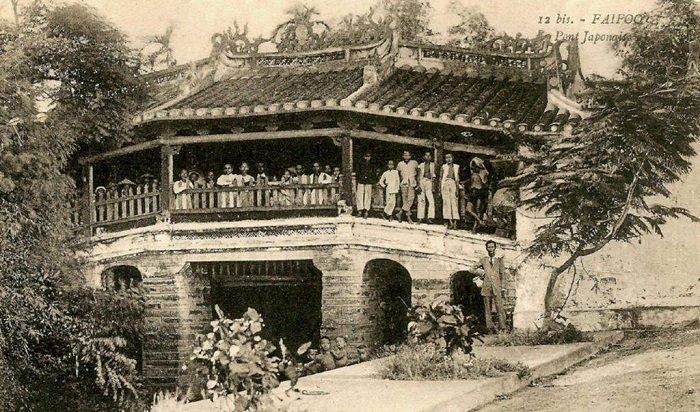
In 1719, Lord Nguyen Phuc Chau while visiting Hoi An gave the bridge the name Lai Vien Kieu (meaning: Bridge to welcome guests from afar). According to the research dating in the roof beam and the epitaph at the bridge head, the bridge was rebuilt in 1817. The temple on it was probably also rebuilt at this time. Then, in 1817, 1865, 1915 and 1986, the temple was restored and gradually lost the Japanese elements, replaced by architecture with Vietnamese and Chinese styles.
On December 17, 1990, Japanese Covered Bridge was granted the title of National Historical – Cultural Relic.
See More: Hoi An Car Rental With Driver
Summary of 5 unique points of Hoi An Bridge Pagoda
Cau Pagoda has become a familiar check-in place for many domestic and foreign tourists when coming to Hoi An, possessing its own unique features:
Hoi An Covered Bridge – the intersection of many cultures
There are few places in the territory of our country where there is a unique blend of cultures as in Hoi An. Hoi An ancient town was once a busy trading port, where merchants from all over the world met, exchanged and traded. And Japanese Covered Bridge is a testament to a time of Japanese–Vietnamese–Chinese architectural exchange. The building possesses architectural features containing many cultural quintessence of Vietnam and East Asian cultures, which are both harmonious, unique and impressive.
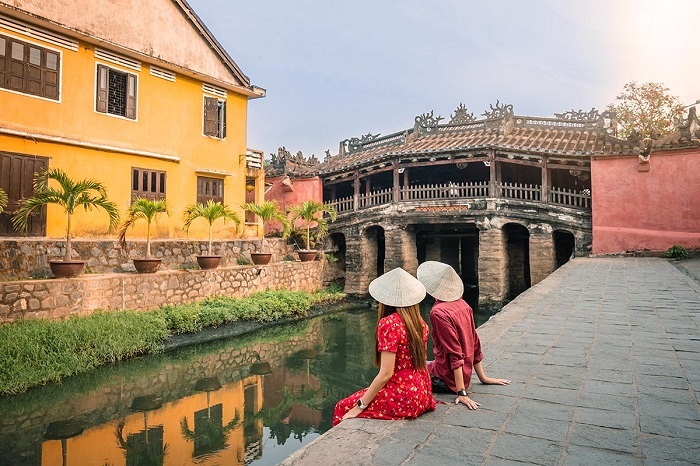
The architecture of Hoi An Bridge Pagoda bears Japanese imprints
Japanese Covered Bridge is made of wood on piers made of brick and stone, with a total length of about 18m, with a roof. The roof of the pagoda is covered with yin and yang tiles, on the main door there is a large sign embossed with 3 Chinese characters: Lai Vien Kieu. The pagoda and bridge are made of wood, painted with elaborate carvings, facing the riverbank. The bridge has 2 wooden animal statues standing in front of it: 1 head is a monkey statue, 1 head is a dog statue (the monkey god and the dog god are the two gods who guard the monster Namazu in Japanese legend).
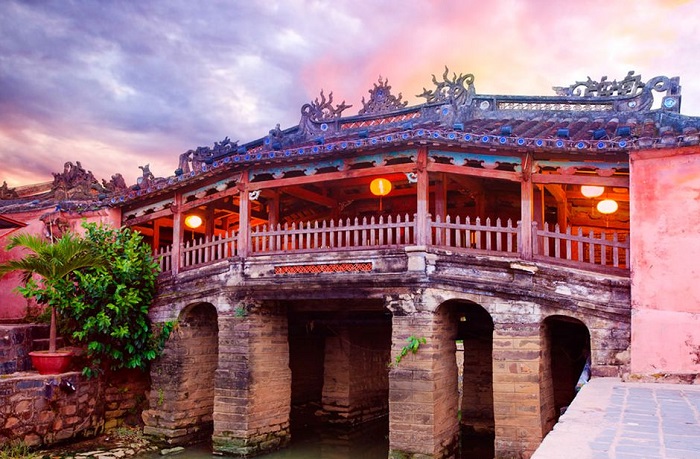
From a distance, Japanese Covered Bridge stands out with its soft and flexible roof curve like a rainbow, both ancient and modern, both quiet and bustling and bustling.
The Covered Bridge in Hoi An does not worship Buddha
Which god is Hoi An’s Covered Bridge worshiping? It’s called a pagoda, but in fact, it’s not here to worship Buddha, but to worship the North Deity Tran Vu. This is the god who protects the country, controls leprosy, floods, brings joy and happiness to people. Therefore, every year, not only Hoi An people but also tourists from all over the world also visit this place to enjoy the scenery, find some serenity and peace for the soul.
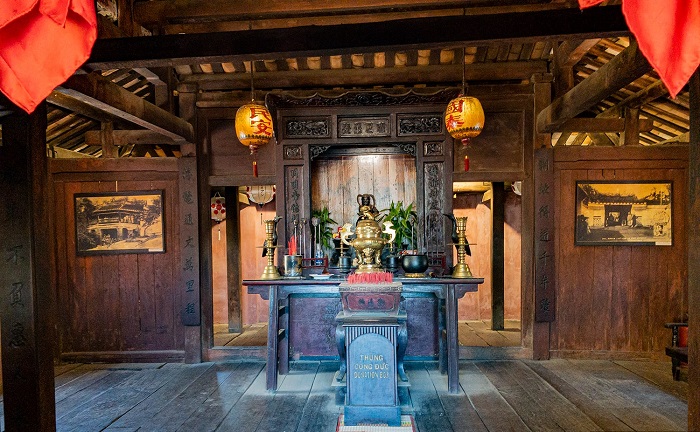
The image of Japanese Covered Bridge appears on the VND 20,000 bill
The image of Japanese Covered Bridge is printed on the back of the VND 20,000 banknote made of polymer plastic paper, issued in 2006 and still in use today. That speaks to the great value in both spirituality and real life of this ancient pagoda in Hoi An.
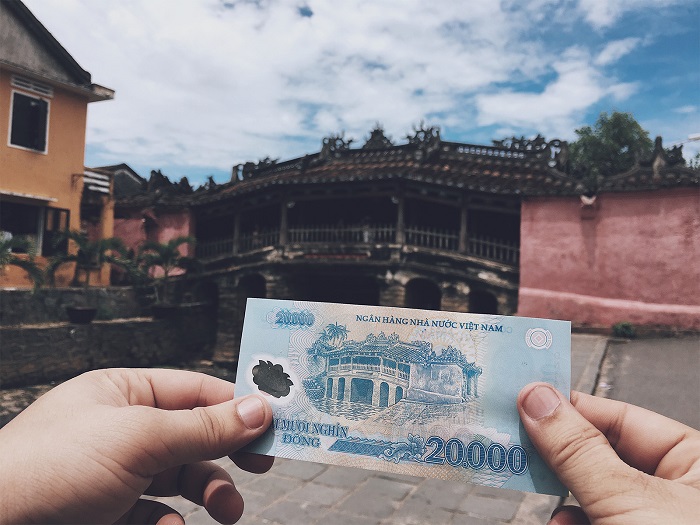
Covered Bridge – an ancient and poetic check-in place
As a bridge with hundreds of years of historical value and unique architecture, bearing the stamp of time, Japanese Covered Bridge becomes a must-visit destination of tourists when coming to Hoi An. When checking-in to Japanese Covered Bridge, you can prepare feminine or unique costumes, light or cool poses, and personality.
Famous tourist and entertainment places near Cau Pagoda
Near Cau Pagoda, there are many attractive Hoi An tourist attractions waiting for you to explore:
Thanh Ha Pottery Village
- Address: Thanh Ha Ward, Hoi An City, Quang Nam Province
- Ticket price: 35,000 VND/adult, 15,000 VND/child
Thanh Ha Pottery Village is about 3km west of Hoi An city center with many rare ancient features. This place is a tourist destination near the wonderful Hoi An Bridge Pagoda, for those who love to experience the long-standing culture of our country. Thanh Ha Pottery Village is not only a tourist destination for a craft village, but also a “living museum” that holds unique precious documents about the traditional beauty of Hoi An with handmade pottery.
Hoi An Market
- Address: Center of the old town, at the intersection of Bach Dang, Tran Phu and Nguyen Thai Hoc streets

Not only famous as a diverse and rich culinary paradise, Hoi An Market is also a very hot check-in place for virtual believers. Hoi An Market has a wide variety of items: vegetables, spices, spices, snacks (Hoi An bread, Cao Lau, Quang noodles), souvenirs, etc. , eat on the spot, buy gifts for friends and relatives.
Duc An ancient house
- Address: No. 129 Tran Phu Street, Hoi An
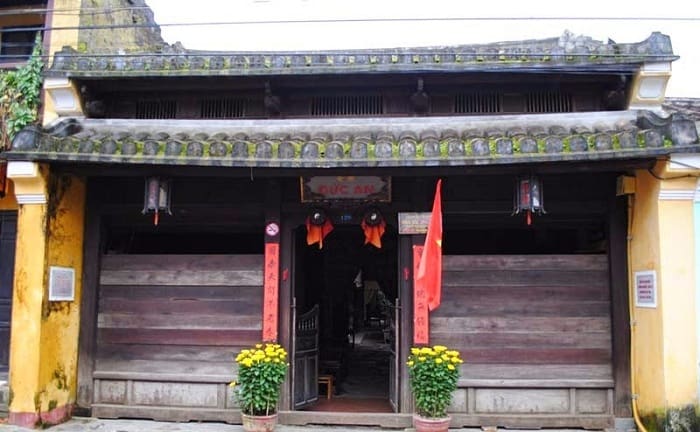
Duc An ancient house with the age of more than 180 years is a tourist attraction near Hoi An Cau Pagoda that attracts many tourists. Visiting this place, visitors will admire the ancient oriental architectural style, listen to historical stories about a heroic time of the nation. Up to now, this house has had 6 generations of living, each year is restored to preserve almost intact the architectural beauty of the ancient times.
What should you pay attention to when traveling to Hoi An Cau Pagoda in Quang Nam?
When traveling to Cau Pagoda, visitors should note:
- Buy tickets: 80,000 VND/person to visit the Japanese Covered Bridge , the Old Quarter, the traditional performing arts area, the museums,…;
- If traveling in a large group, you should hire more guides to be introduced to the special architectural features and hear about the old stories in Hoi An town;
- Cau Pagoda is very crowded with visitors, so you can visit this place around 9 am or 2-3 pm to attract more visitors;
- Because Cau Pagoda is a spiritual tourist destination, when you come here to visit and pray for peace, you should not jostle, don’t talk loudly, wear discreet clothes;
- Don’t forget to enjoy Hoi An specialties near Japanese Covered Bridge such as Cao Lau, Quang noodles, chicken rice, pancakes, Phuong bread, mixed tea, etc.
Through hundreds of years of history, many ups and downs of the times, Japanese Covered Bridge still stands as a timeless proof. When traveling to Hoi An, do not forget to visit this place to feel the peace and tranquility in your soul and wish you and your family all the best!
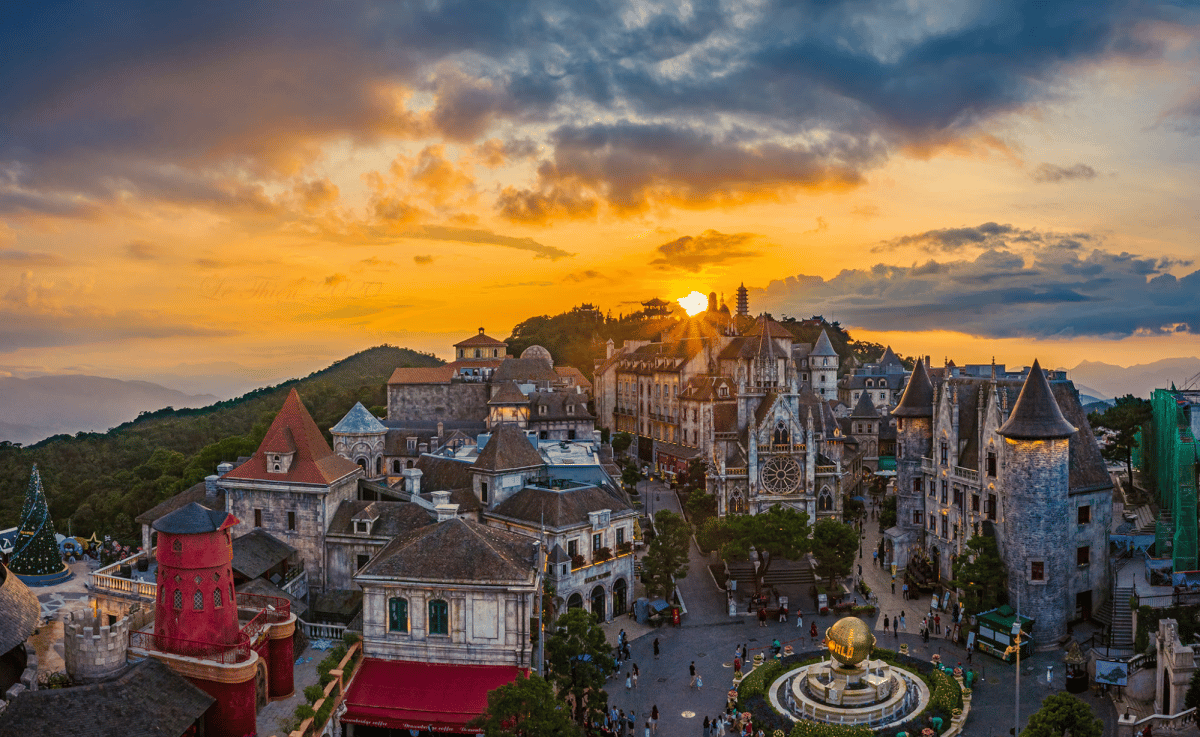

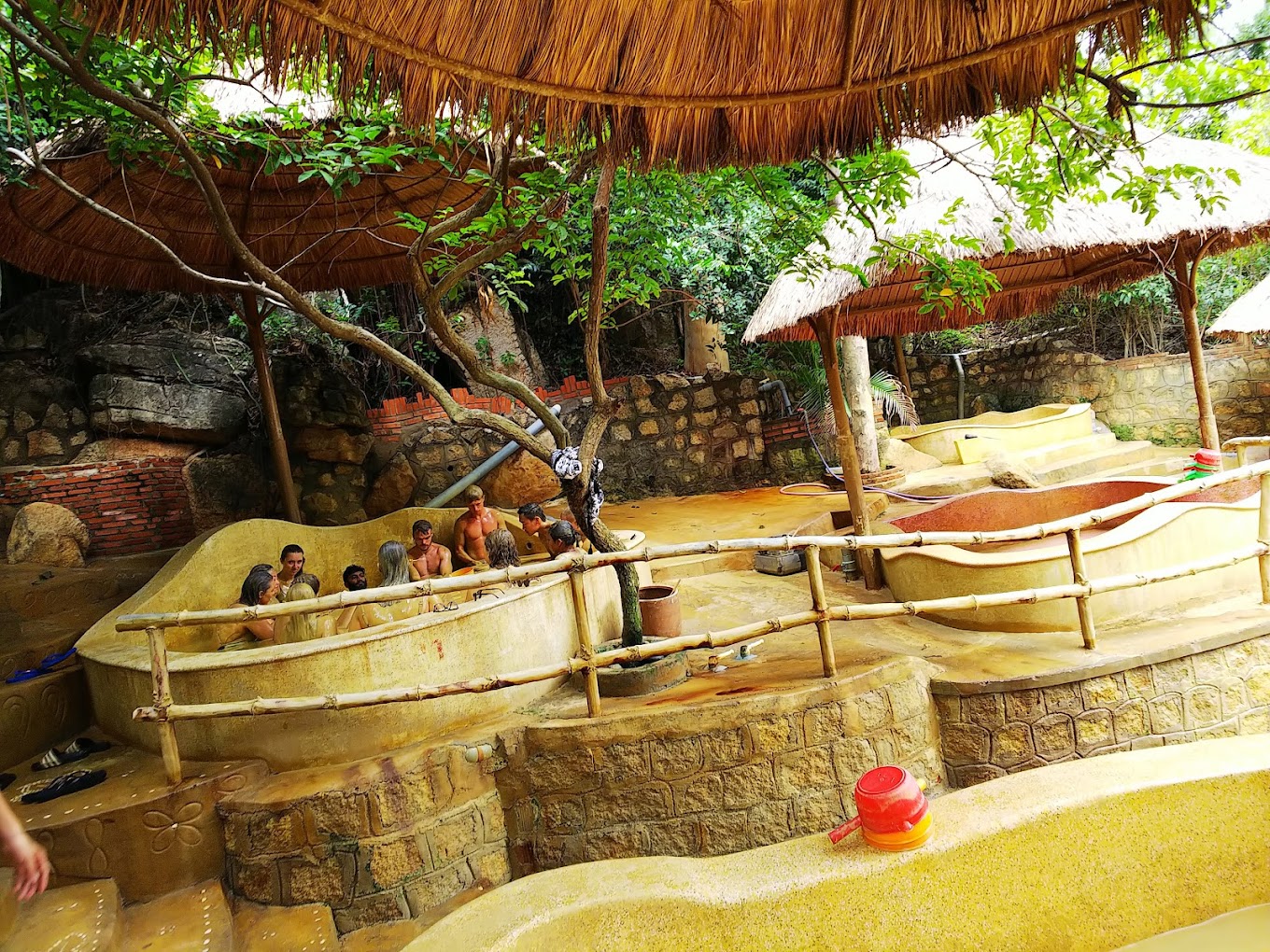
[…] The Japanese Covered Bridge: Often referred to as a gem in the heart of Hoi An, this bridge spans a small canal flowing into the Thu Bon River and is located between Nguyen Thi Minh Khai and Tran Phu streets. The bridge has a rich and long history and is famous for its unique architecture that blends Vietnamese, Japanese, Chinese, and Western styles. Almost every tourist visiting Hoi An comes here to take pictures. […]
[…] the soul and symbol of Hoi An, the Japanese Covered Bridge, also known as the Japanese Bridge, was constructed by the Japanese at the end of the 16th century. […]
[…] know, the Japanese Covered Bridge is a popular check-in spot for many young people when they visit Hoi An’s ancient town. The […]
[…] approximately 3.2 kilometers away, Japanese Bridge Hoi An, also known as Chua Cau, is an iconic symbol of Hoi An. This beautifully crafted bridge is famous […]